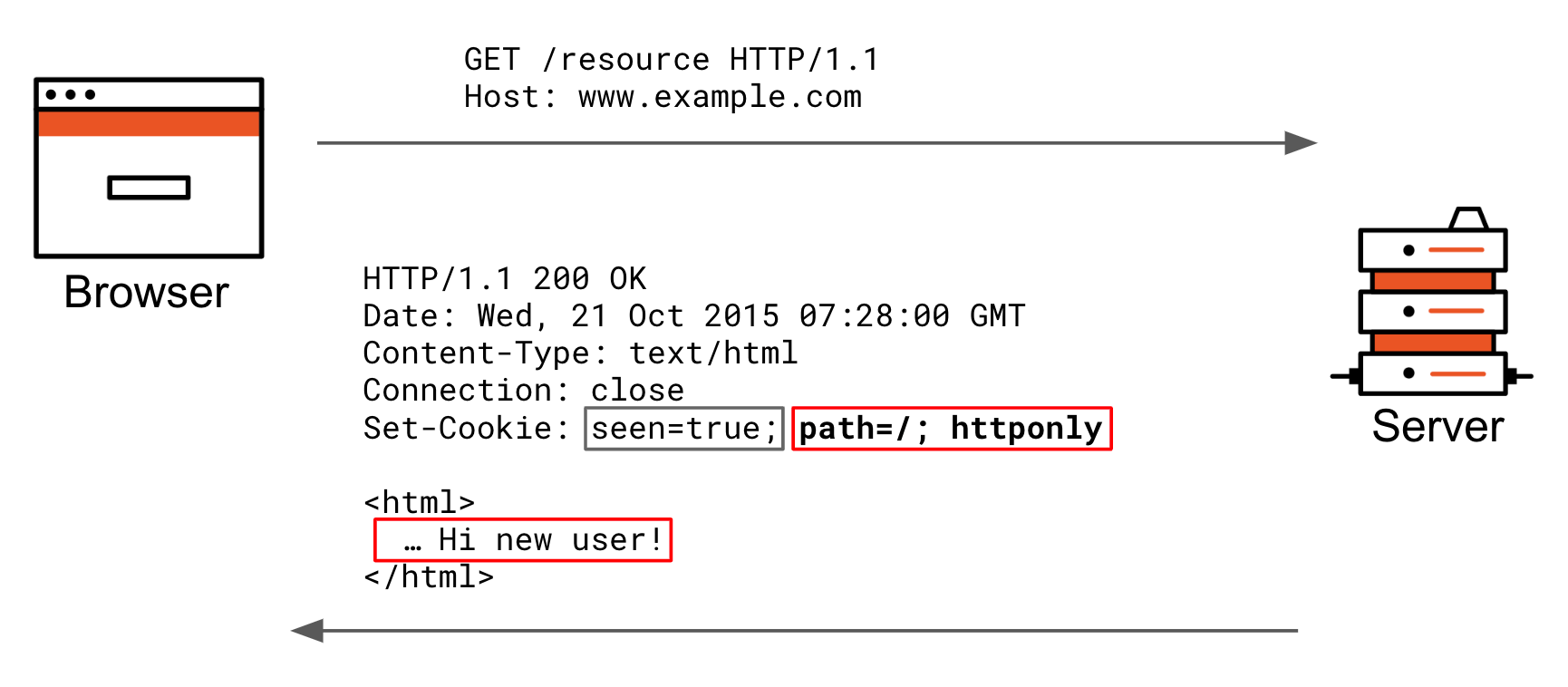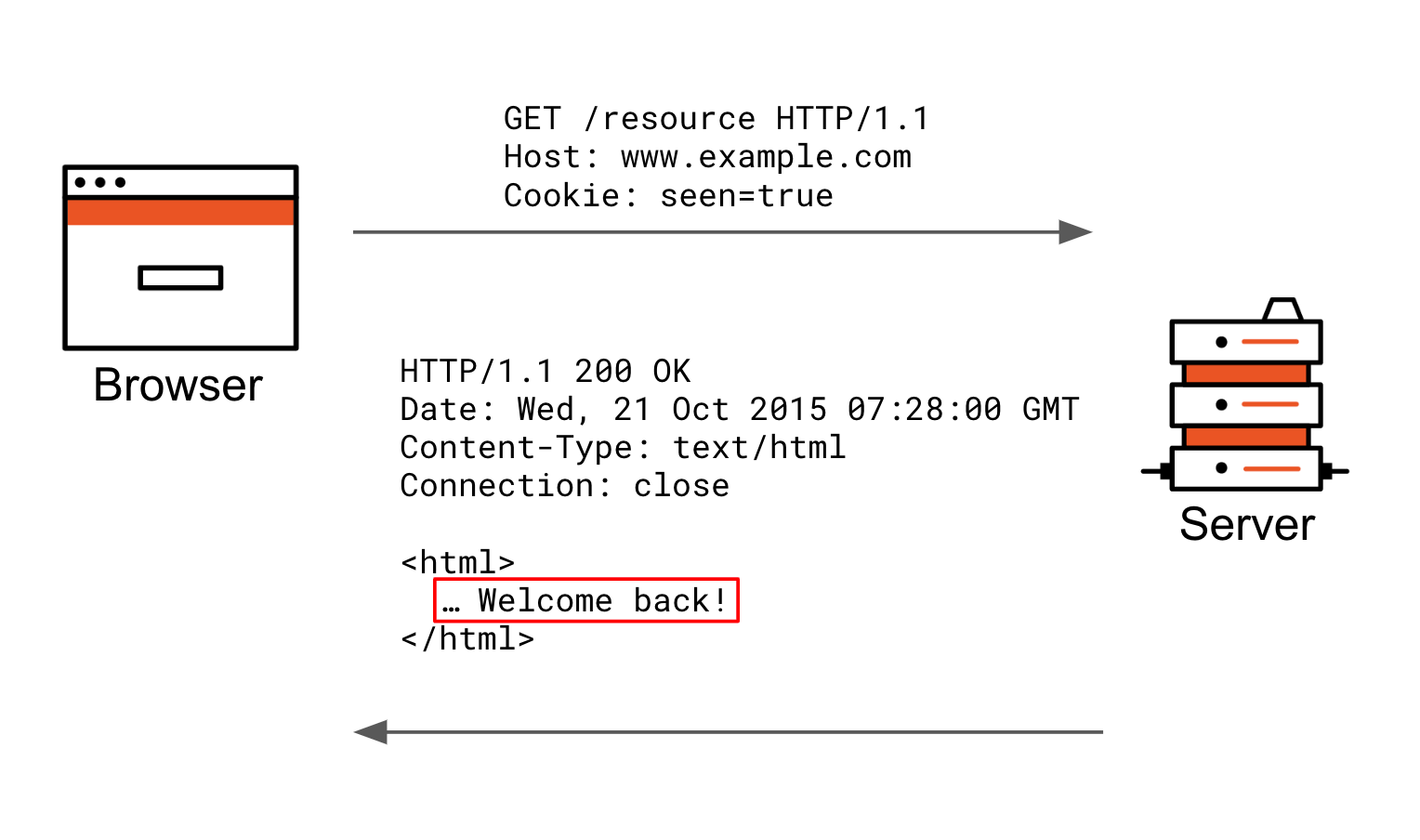SameSite Cookie Attribute Changes
Cookies, which are used for authentication and the maintenance of sessions, can be secured by setting attributes. Auth0 uses cookies for the following:
OIDC Enterprise with
form_postSAML HTTP-POST Binding
Web message (aka
checkSession)
SameSite attributes
You can add SameSite cookie attributes in the set-cookie HTTP response header to restricts browser behavior. It may prevent the browser from sending the cookie's key=value pair based on the type of interaction that triggered the HTTP request.
Accepted attribute values are as follows:
| Attribute | Description |
|---|---|
strict |
Send the cookie if the user is navigating within the website origin bounds |
lax |
Send the cookie if the user is navigating between domains but not for 3rd party contexts (iframes or posts) |
none |
Send the cookie with requests crossing the website origin bounds. Unless other conditions are present (i.e., third-party cookies are blocked), do not send the cookie. |
Some of the cookie attributes you may be familiar with include:
| Attribute | Description |
|---|---|
httpOnly |
Allows a cookie to be sent only with HTTP requests; not readable using Javascript's document.cookie |
secure |
Allows the browser to send the cookie only to a secure context; whether the context is considered secure or not is browser-dependent, but this typically requires the use of HTTPS |
max-age / expires |
Controls whether the cookie is a session cookie (e.g., dropped when your browser terminates its session) or persistent (e.g., the cookie persists beyond the browser session) |
The browser, upon receipt, parses the headers and updates its cookie jar accordingly.
Browser cookie changes
As of February 2020, Google Chrome v80 changed the way it handles cookies. Auth0 implemented the following changes in the way it handles cookies:
Cookies without the
SameSiteattribute set will be set tolaxCookies with
SameSite=nonemust be secured; otherwise they cannot be saved in the browser's cookie jar
The goal of these changes is to improve security and help mitigate CSRF attacks.
These changes affect the following cookies:
auth0(handles user sessions)auth0-mf(handles information relevant to multi-factor authentication)did(the identifier for a device/user agent)
For these cookies, Auth0 will:
Set the
SameSiteattribute tonone, with the cookie requiring the use of HTTPS (regardless of environment)Set fallback cookies in the event that a legacy browser does not support
SameSitebeing set toNone. These fallback cookies areauth0_compat,auth0-mf_compatanddid_compat
The diagram below shows what happens during a fresh interaction. The end user requests a page not previously visited. The server changes the way it renders when the visitor returns and sets a seen cookie. The grey part of the set-cookie header is the actual cookie key=value. The red portion are the cookie attributes the browser stores in the cookie jar to decide later if it should include the cookie key+value pair in requests.

The following diagram shows what happens if you make the same request using the same browsing session. The request goes to the same server, and because the cookie attributes don't prohibit the seen cookie to be sent, it is automatically included as a cookie header in the request. The server will now respond differently based on the fact that it received this cookie.

Features affected
The table below shows how the SameSite attribute changes may affect your apps.
| App Behavior | Affected by Change |
|---|---|
Cookies set as sameSite=none when the website is not https:// |
Yes |
Cookies don't have explicit sameSite attribute value set and are required in a cross-origin context (such as HTTP form_post, embedding an iframe) |
Yes |
| Native apps (everything not cookies + web based) | No (M2M) |
Already setting an explicit sameSite cookie attribute value |
No |
| Different subdomain on the same eTLD+1 (app is on the same eTLD+1 as the custom domain Auth0 tenant) | Potentially |
If you are using a web app with sessions (e.g. for saving user preferences, shopping carts, etc.), and you allow users to sign in using identity providers such as Google, Github, or Auth0, then you rely on cookies to achieve that functionality. There are browser cookie behavior changes that may break the user experience. Google Chrome, for example, is the first browser vendor to roll out a change that might not be compatible with your web application.
You may notice that the Google Chrome and Microsoft Edge specs for setting SameSite to undefined has changed from SameSite defaulting to none to lax instead.
For example, let's say you build a new UI and have several services that you proxy to via an Auth0 gateway. At this gateway, you create a cookie session. If you make a cross-origin request, you may see this warning in the Javascript console:
A cookie associated with a cross-site resource (URL) was set without the SameSite attribute. A future release of Chrome will only deliver cookies with cross-site requests if they are set with SameSite=None and Secure. You can review cookies in developer tools under Application>Storage>Cookies and see more details at https://www.chromestatus.com/feature/5088147346030592 and https://www.chromestatus.com/feature/5633521622188032
Actions you need to take
To prepare for this change, you should:
Review the list of unsupported browsers.
Set your application to use
SameSite=noneif it usesresponse_mode=form_postwhen interacting with Auth0 (note that Chrome makes no exceptions, even forlocalhost)Set your cookie as secure if its
SameSiteattribute equalsNone.Otherwise, it will be rejected by the browser. If you use HTTP for your Callback URLs, these will break if you use such cookies for binding the authorization request state/nonce. Therefore, you must either use HTTPS or setSameSite=lax